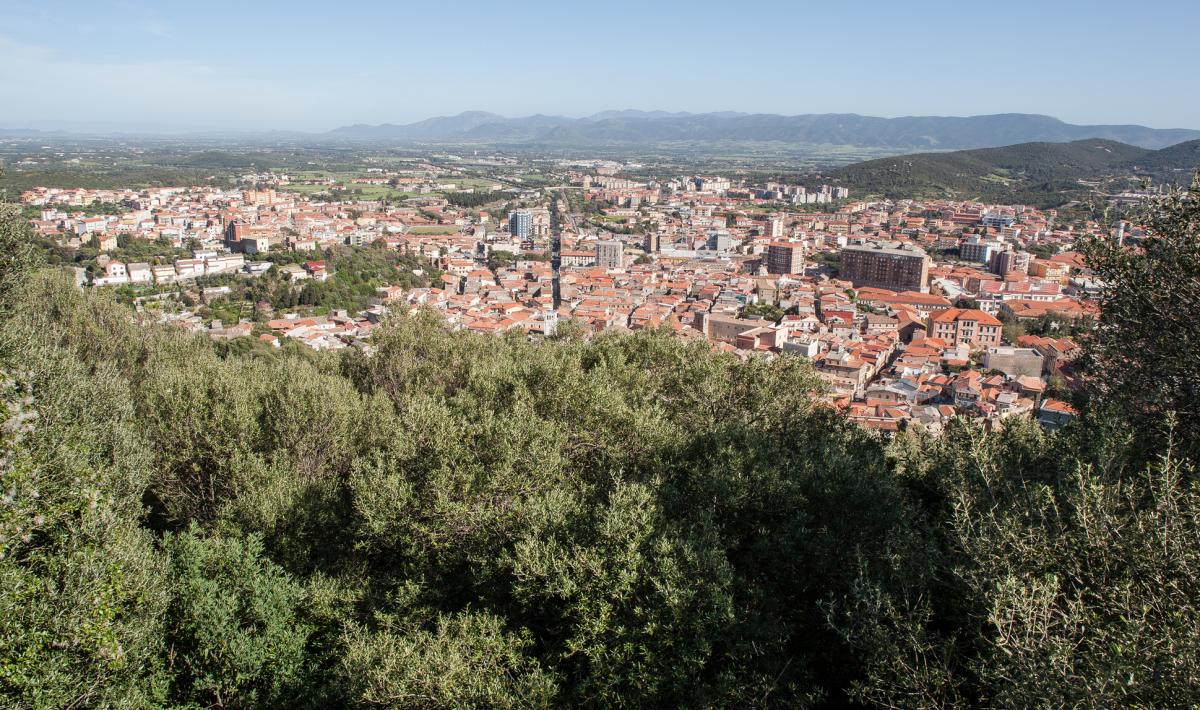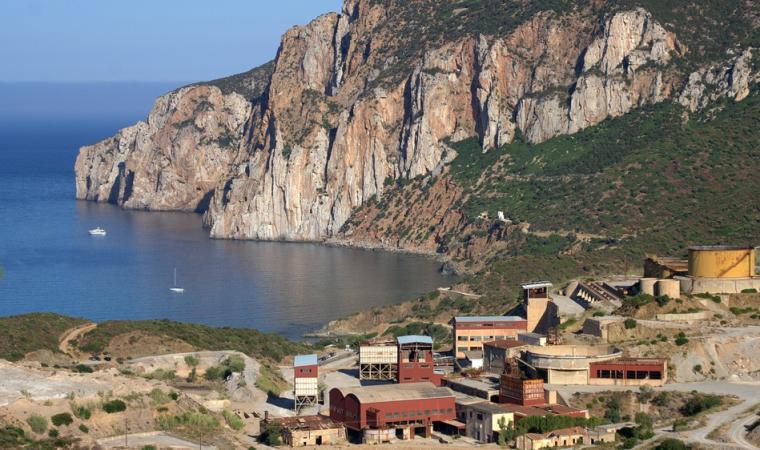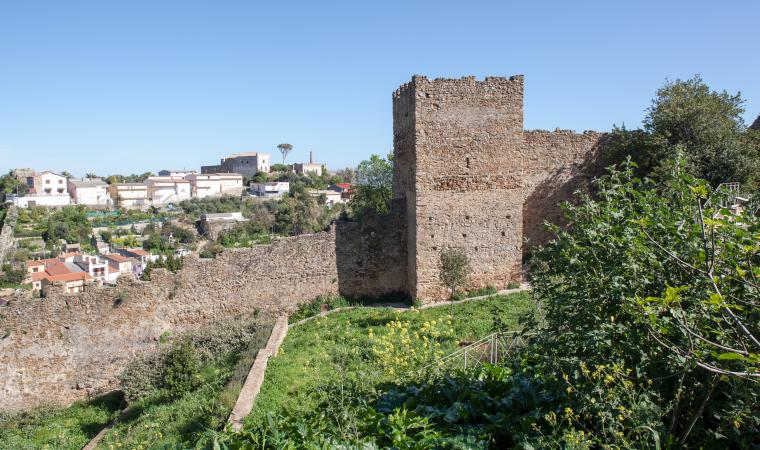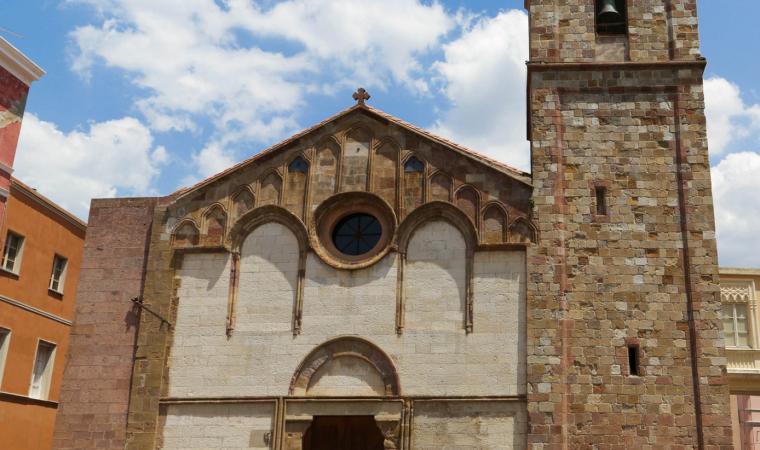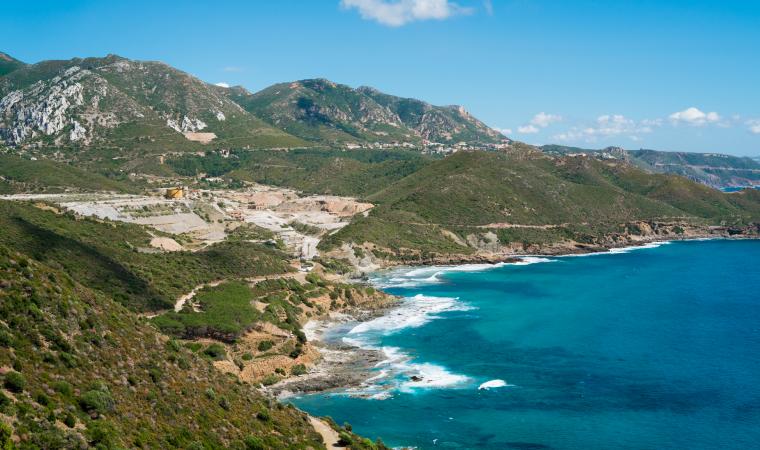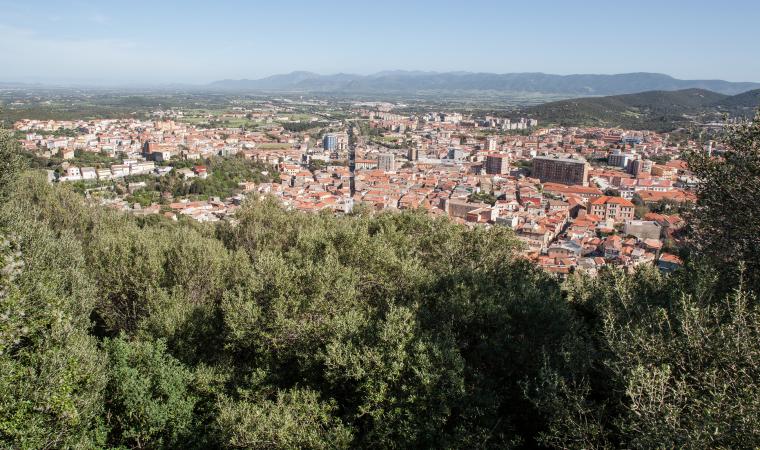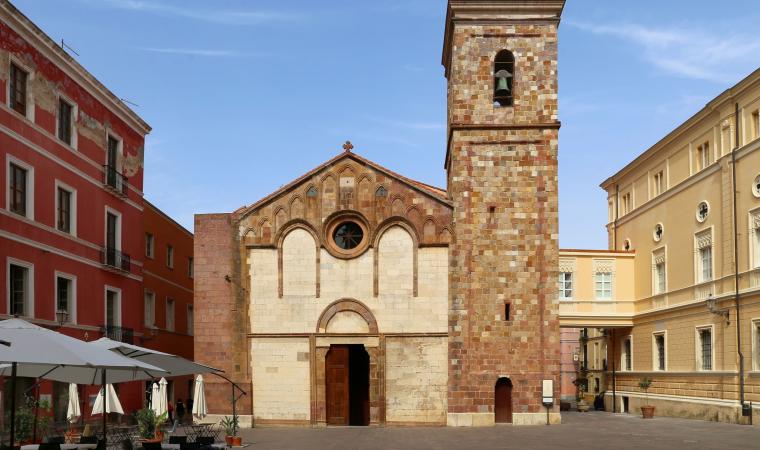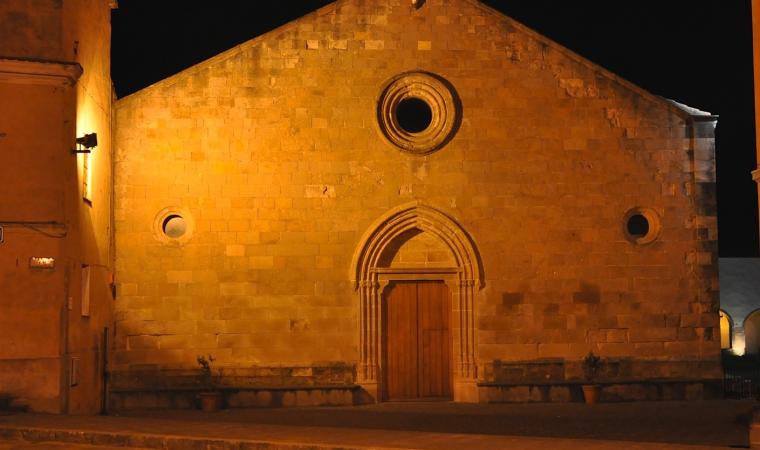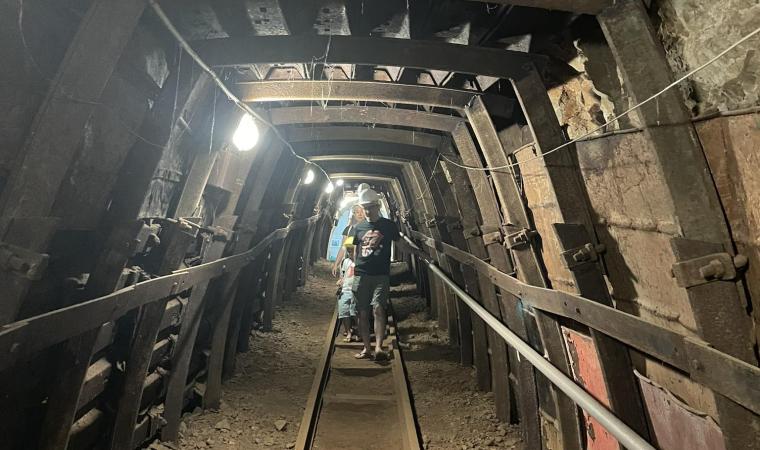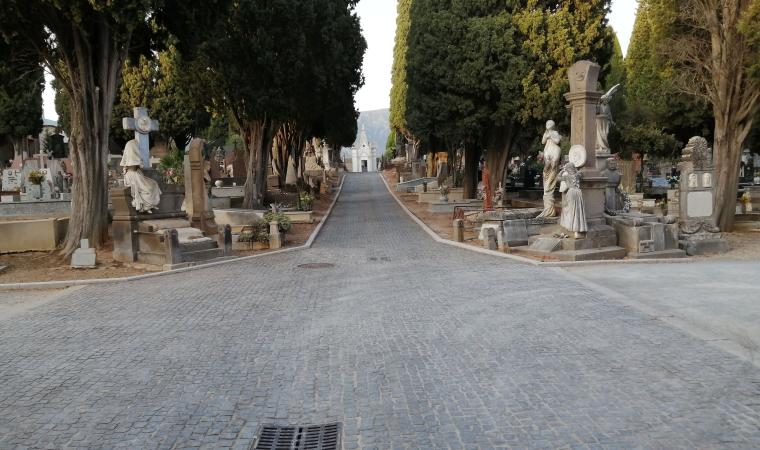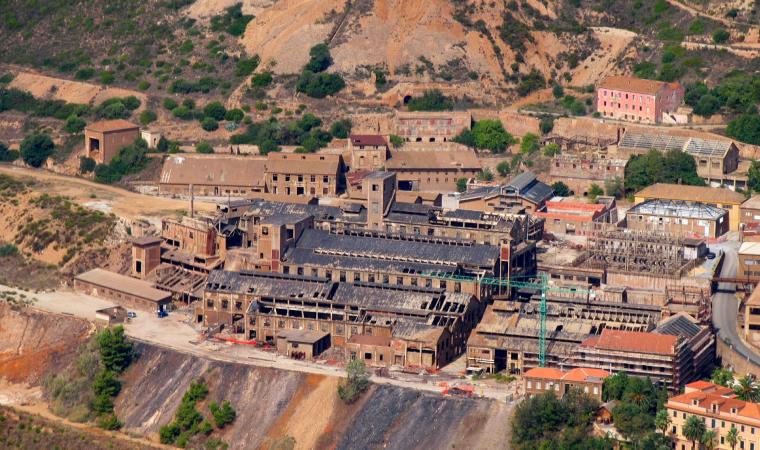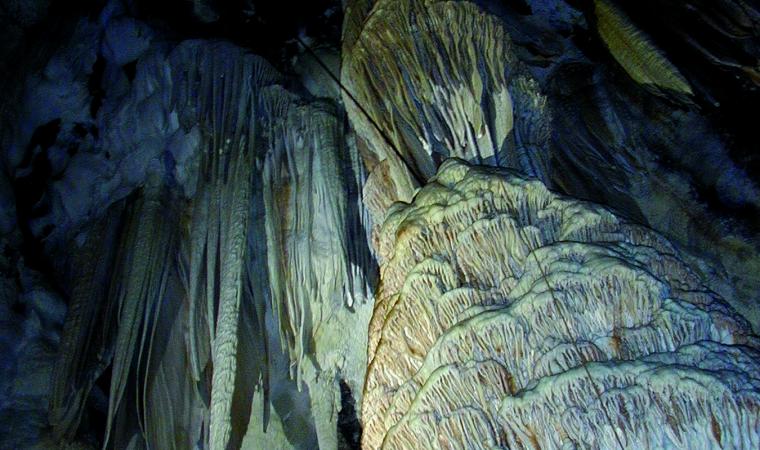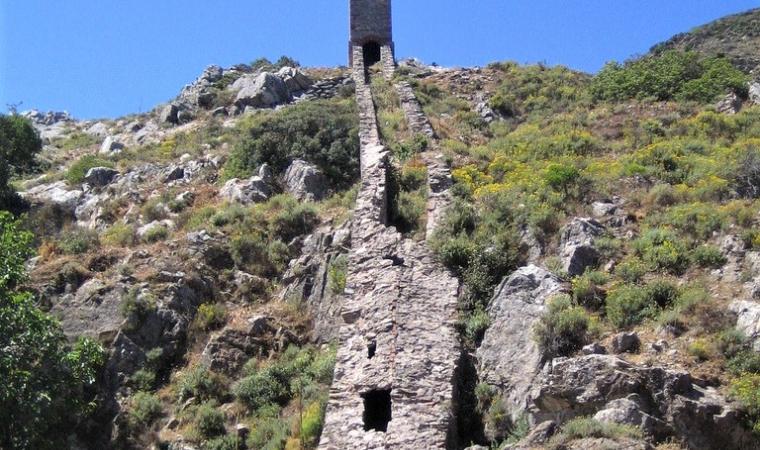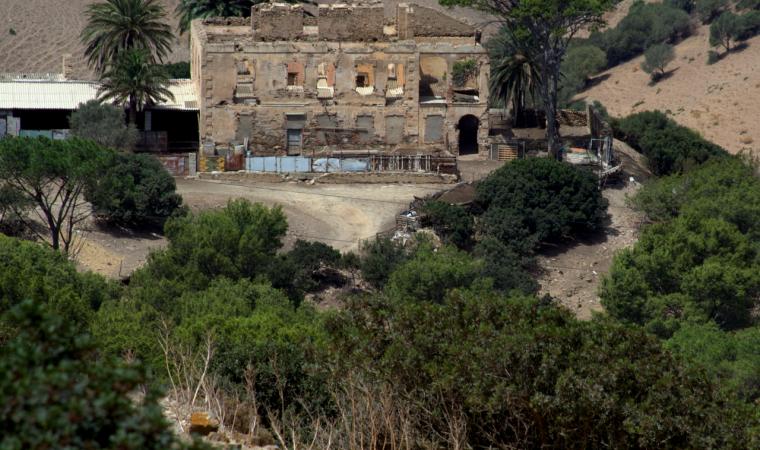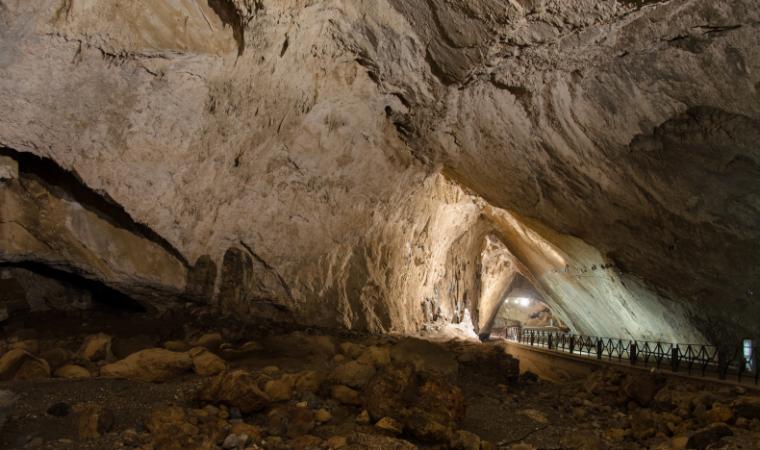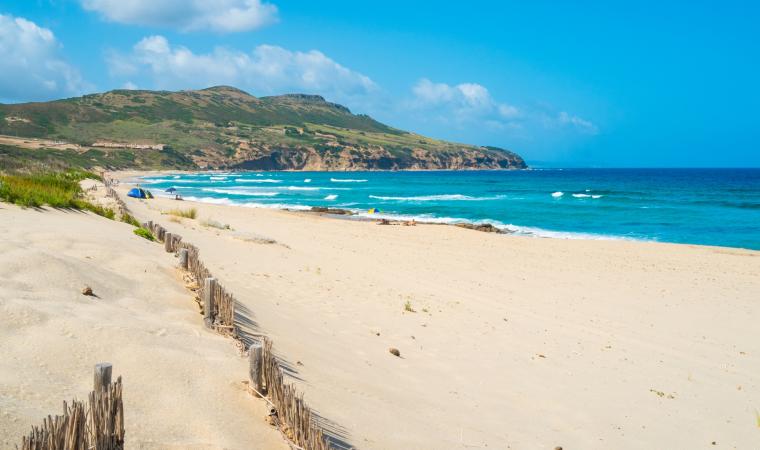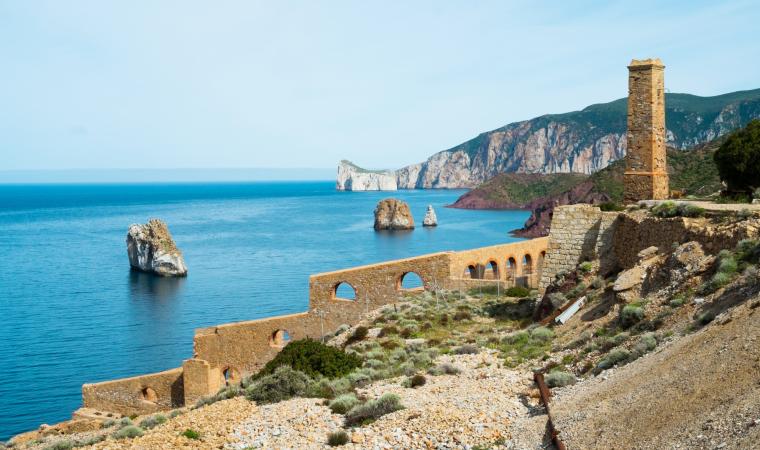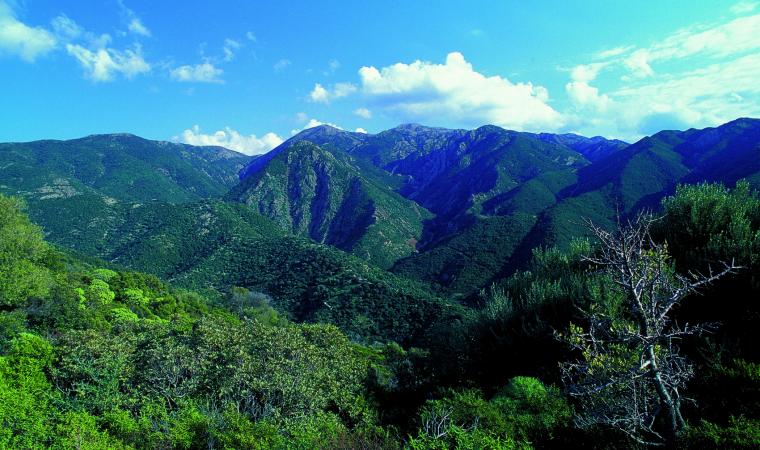Its name derives from Iglesiente, the territory that was the protagonist of the Sardinian mining past, of which this town was central. It is populated by 27 thousand inhabitants, as well as being the bishop’s seat and heir of the ancient diocese of Sulcis. In Spanish, ‘Iglesias’ means ‘churches’. Not by chance - in a place with a glorious past, especially during the Catalan-Aragonese domination (when it was a royal city), the celebration of the rituals of Holy Week take on forms and colours of Spanish tradition. The Processioni dei Misteri (Processions of the Mysteries) on Holy Tuesday and Friday are the most evocative expressions. Amongst the churches, the Cathedral of Santa Chiara (14th century), the Madonna delle Grazie, the Chiesa del Collegio, the Jesuit ‘temple’, and San Francesco, one of Sardinia’s most intact and significant examples of Gothic architecture and which houses a retable from 1560, are all worth a visit.
Also noteworthy are the ruins of San Salvatore, one of the few Byzantine cruciform buildings (9th-11th century). The mining route of Santa Barbara sets out from Iglesias, with 24 stops over 400 kilometres, to be covered on foot or by mountain bike on a discovery of the history and devotion of the Sulcis. Another tradition to be experienced is the medieval historical procession held in mid-August, featuring musicians, flag-throwers and people in medieval costume in the historic parades of the area.
For over a century, since well before the mid-20th century, the mines have been the main source of income for the Iglesias locals. Today, they form the heritage of industrial archaeology in the Geominerario di Sardegna park, recognised by UNESCO. The Museum of Mining Art, housed in the ‘Asproni’ institute, an Art Nouveau building from the early-20th century, and the Museum of Machines retrace their respective evolution through a collection of minerals, plastics, reconstructions of mining environments and displays of original machinery. To explore the mines ‘from within’, there are guided tours in the fascinating Monteponi, one of the most important extraction plants in Italy, in Nebida, amongst the wells, tunnels, piers and miners’ houses (inhabited by 3,000 people in 1910 and today a ghost village), including the Lamarmora washery (1897), in Masua and Porto Flavia, futuristic and revolutionary work that allowed for the direct boarding of minerals, a dock suspended in the middle of a rocky wall, from which a 600-metre tunnel was suspended above the sea. Alongside the wonders of the Iglesias coast are the long Porto Paglia, the stacks of Masua and Pan di Zucchero, a 132-metre high natural monument forged by time, the beach of Porto Flavia and the Canal Grande di Nebida, a valley where one-hundred-metre walls drop vertiginously, guarding over a stretch of blue and emerald-green sea. The steep coast with enchanting coves is ideal for photo shoots. After the sea, the delights of the local cuisine are to be explored, including tuna, potato and mint ravioli, and sweets made with almonds that are all beautiful to look at and pleasing to the palate.

